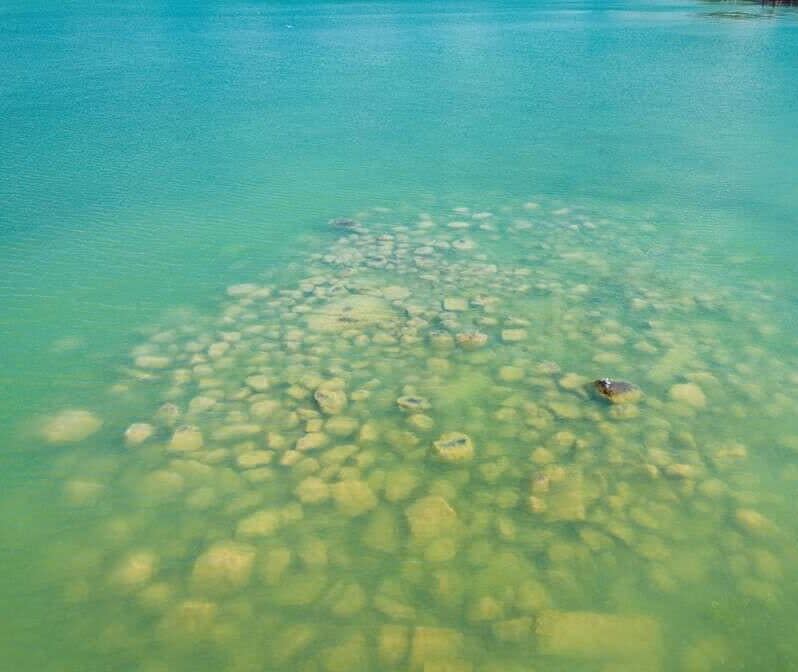What should be done about a hidden rock pile near Lake St. Clair's shoreline?
"We've seen people hurt by it," says Paul Hotte of Hotte Marine in Windsor-Essex, Ont.
He's referring to a hidden pile of rocks in Lake St. Clair near the shoreline in the Tecumseh area of Russell Woods.
Hotte and other residents are concerned they present a hazard to boaters and people on watercraft — adding they've been dealing with it for decades.
"People have been hitting them and never, ever did anybody do anything but mark them as a real hazard."
The hazard markers are floating buoys that have been used there in the past, but never consistently, he says.
"The liability of us marking them we're more responsible for them. So that's why they're not marked all the time."

According to Hotte, the rock island was put in when the water was lower many years ago.
"Maybe even used it for a breakwall. And that's why it's out there when the water is low. Sometimes you can see them. When the water is high, you can't see them. There's been some pretty serious stuff."
ERCA points to benefits and jurisdiction
While the rocks might present a hazard out in the water to some, the Essex Region Conservation Authority (ERCA) says they also provide some benefit with respect to species and fish habitat.
James Bryant with ERCA says they also serve as a type of acting breakwater.
"Those types of structures do provide some benefit in terms of the inland communities and the shorelines with respect to protecting against erosion, wave energy dissipation," he said.
"There's habitat, endangered species, and then there's permissions to ensure that we don't exacerbate any known issues along the shoreline with respect to the conservation authority and our legislation."

As far as concerns raised about public safety, he says they certainly don't want to rule that out.
Bryant says Transport Canada deals with any safety issues with respect to navigation and hazards — whereas, the Department of Fisheries and Oceans Canada would have to weigh in for species at risk.
CBC News has reached out to both federal government departments and did not hear back before publication.
"All things have to be weighed in terms of public safety as well. And right now that seems to be the concern of the residents."
Hotte agrees there is very good fish habitat around the rocks and that needs to be strongly considered when deciding what to do.

Lakeshore's mayor says the rock piles just offshore aren't in the municipality's jurisdiction but they're "certainly interested" in improving the safety of Lake St. Clair whenever possible.
Tracey Bailey calls the lake one of their most popular destinations — and that they're committed to promoting safety on the water.
"However, as the Essex Region Conservation Authority noted, provincial and federal agencies may have concerns and limitations on what actions can be taken," said the mayor in an emailed statement.

Bailey says she expects the rocks to be spoken to at an upcoming meeting of council.
"Will discuss the creation of a report about how Lakeshore can work with the relevant agencies, including Transport Canada, to develop solutions to this issue."


